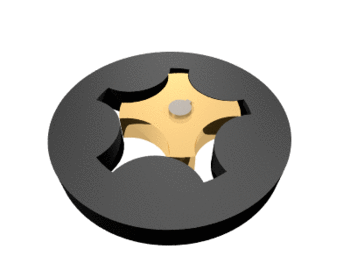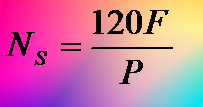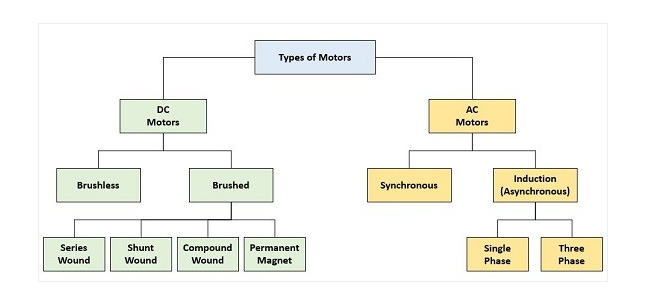How Motor and Pump Application Formula can Save Energy and Make You Smart Designer?
Motor and Pump applications simple formula can save energy by helping effective design for using maximum efficiency of your equipment.
Some times we ignore these basic design formula and use larger size of equipment using thump-role formula which cases extra money energy as wastage.
 |
| A gerotor (image does not show intake or exhaust) (Photo credit: Wikipedia) |
If we love ourself to be a energy saver or go to as green environment; we should take care of every bit of energy uses. Following motor and pump applications formula can help us to effective use of energy.
Centrifugal
Applications
AFFINITY LAWS
The Affinity Laws of centrifugal pumps or fans indicates the influence on volume capacity, head (pressure) and/or power consumption of a pump or fan due to
- change in speed of wheel - revolutions per minute (rpm)
- geometrically similarity - change in impeller diameter
Following three affinity formulas are related with simply motor horse power, RPM (revolution per minute), Flow and pressure.
Pres2
|
=
|
(RPM2)2
|
Pres1
|
(RPM1)2
|
HP2
|
=
|
(RPM2)3
|
HP1
|
(RPM1)3
|
Where:
Pres=Pressure
RPM= Revolutions Per Minute
FANS AND BLOWERS
Centrifugal Fans and Blowers typically have one of seven types of wheels that draw the air into the inlet of the blower housing, through the wheel, and discharges it at 90 degrees out through the discharge of the housing.
The two most common types of Centrifugal Blowers are Pressure Blowers and Volume Blowers.
Fans and Blowers are very common uses in industry, Basic three formula can help you to design effective and perfect size of fan and blower as your desired.
HP =
|
CFM x PSF
|
33000 x Efficiency of Fan
|
HP =
|
CFM
x PIW
|
6356
x Efficiency of Fan
|
HP =
|
CFM
x PSI
|
229
x Efficiency of Fan
|
Where:
CFM= Cubic Feet per Minute
PIW= Inches of Water Gauge
PSF= Pound per Square Foot
PSI= Pound per Square Inches
PUMPS
Pump is a
device that moves fluids (liquids or gases), or sometimes slurries, by
mechanical action. Pumps can be classified into three major groups according to
the method they use to move the fluid: direct lift, displacement, and gravity
pumps.
Perfect capacity of pump design and operation is very important which can help the following two simple formula.
HP
=
|
GPM x FT x Specific Gravity
|
3960 x Efficiency of Pump
|
HP
=
|
GPM x PSI x Specific Gravity
|
1713 x Efficiency of Pump
|
Where:
FT=
Head in Feet
GPM=
Gallons Per Minute
PSI=
Pounds Per Square Inch
VOLUME OF LIQUID IN A
TANK
Gallons= 5.875 x D2 x
H
1 gallon (US) of water
weights 8.33 lb
Specific gravity of
water- 1.0
Where:
D= Diameter of Tank in
feet
H= Height of liquid in
feet
Motor
Application Formulas
Following motor applications formula is necessary everyday every moment. It will help to calculate your motor's HP (Horse Power), Kilowatts, Torque in Pound-feet or Newton-meter.
HP(Horse Power)
=
|
Torque (lb-ft) x RPM
|
5252
|
Kilowatts =
|
Torque (N-m) x RPM
|
9550
|
Torque (lb-ft) =
|
Horse Power (HP) x 5252
|
RPM
|
Torque (N-m) =
|
Kilowatts x 9550
|
RPM
|
1HP= 746 watts
Hope motor and pump application formula will help to design a smart and effective energy saving initiative.























